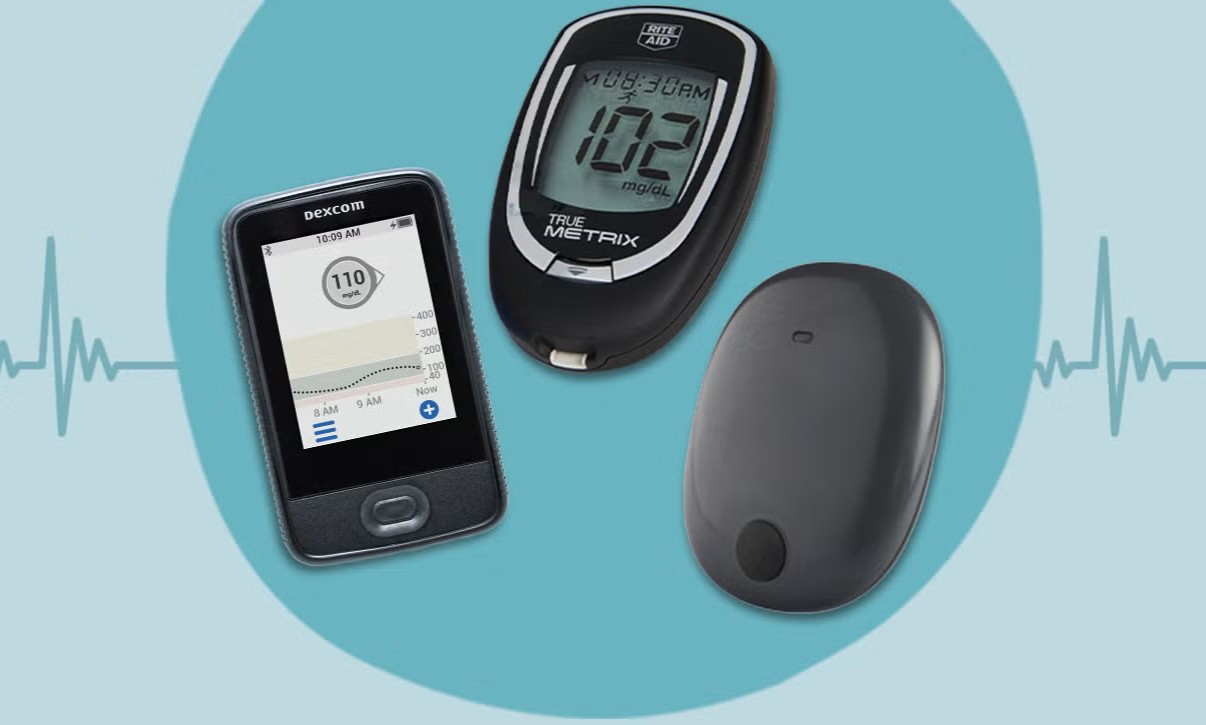
What is a glucose meter? A glucose meter is a small, portable device used to measure the amount of glucose (sugar) in the blood. People with diabetes often use these devices to monitor their blood sugar levels, helping them manage their condition more effectively. The process involves pricking a finger to get a drop of blood, placing it on a test strip, and inserting the strip into the meter. Within seconds, the meter displays a reading. Glucose meters are essential for diabetes management, providing real-time data that can help prevent complications. They come in various types, including basic models and advanced versions with Bluetooth connectivity.
What is a Glucose Meter?
A glucose meter is a small, portable device used to measure the amount of glucose (sugar) in the blood. It's a crucial tool for people with diabetes to manage their condition effectively. Here are some interesting facts about glucose meters.
-
The first glucose meter was invented in 1965 by Leland Clark and Ann Lyons. It was called the Ames Reflectance Meter and was quite bulky compared to today's devices.
-
Modern glucose meters can provide results in as little as five seconds. This quick response time helps people make timely decisions about their health.
-
Some glucose meters now come with Bluetooth technology, allowing users to sync their data with smartphones and other devices for better tracking and management.
-
Continuous Glucose Monitors (CGMs) are a type of glucose meter that provides real-time glucose readings throughout the day and night. They are particularly useful for people with type 1 diabetes.
-
The accuracy of glucose meters can vary. Factors like temperature, altitude, and even the user's hydration level can affect the readings.
How Do Glucose Meters Work?
Understanding how glucose meters work can help you appreciate their importance in diabetes management.
-
Glucose meters use a small drop of blood, usually obtained from a finger prick, to measure glucose levels. The blood is placed on a test strip, which the meter reads.
-
The test strip contains chemicals that react with glucose in the blood. This reaction produces an electrical current, which the meter measures to determine the glucose level.
-
Some newer models use alternative testing sites like the forearm or palm, which can be less painful than finger pricks.
-
Calibration is essential for accurate readings. Some meters require manual calibration, while others are pre-calibrated.
-
Many glucose meters now offer multi-user settings, making it easier for families to share a single device.
Benefits of Using a Glucose Meter
Using a glucose meter offers numerous benefits, especially for those managing diabetes.
-
Regular monitoring helps in maintaining blood sugar levels within the target range, reducing the risk of complications.
-
Glucose meters can help identify patterns and trends, making it easier to adjust medication, diet, and exercise routines.
-
They provide immediate feedback, allowing for quick corrective actions if blood sugar levels are too high or too low.
-
Some models come with built-in memory, storing hundreds of readings, which can be useful for long-term tracking and sharing with healthcare providers.
-
Advanced meters offer features like carbohydrate counting and insulin dose calculators, making diabetes management more comprehensive.
Challenges and Limitations
Despite their benefits, glucose meters also have some challenges and limitations.
-
Test strips can be expensive, and the cost can add up over time, especially for those who need to test frequently.
-
Incorrect usage, such as not washing hands before testing, can lead to inaccurate readings.
-
Some people find finger pricks painful, which can discourage regular testing.
-
Environmental factors like extreme temperatures can affect the accuracy of readings.
-
Not all glucose meters are compatible with all test strips, so it's essential to use the correct type.
Future of Glucose Meters
The future of glucose meters looks promising with ongoing advancements in technology.
-
Researchers are working on non-invasive glucose meters that use methods like infrared light or saliva to measure glucose levels, eliminating the need for finger pricks.
-
Integration with artificial intelligence (AI) could provide more personalized diabetes management plans based on individual data.
-
Wearable glucose meters are becoming more popular, offering continuous monitoring without the need for frequent blood samples.
-
Some new models are exploring the use of smartwatches and other wearable tech to provide real-time glucose monitoring and alerts.
-
Advances in nanotechnology may lead to more accurate and less invasive glucose meters in the future.
Final Glimpse at Glucose Meters
Glucose meters have revolutionized diabetes management. These handy devices provide quick, accurate blood sugar readings, helping people make informed health decisions. With advancements in technology, modern glucose meters offer features like Bluetooth connectivity, data tracking, and even integration with smartphones. This makes it easier than ever to monitor and manage blood sugar levels.
Remember, regular monitoring is key to managing diabetes effectively. Whether you're newly diagnosed or have been managing diabetes for years, a reliable glucose meter is an essential tool. Choose one that fits your lifestyle and needs.
In short, glucose meters are more than just gadgets; they're lifelines for many. Stay informed, stay healthy, and keep your blood sugar in check with the right glucose meter.
Was this page helpful?
Our commitment to delivering trustworthy and engaging content is at the heart of what we do. Each fact on our site is contributed by real users like you, bringing a wealth of diverse insights and information. To ensure the highest standards of accuracy and reliability, our dedicated editors meticulously review each submission. This process guarantees that the facts we share are not only fascinating but also credible. Trust in our commitment to quality and authenticity as you explore and learn with us.
